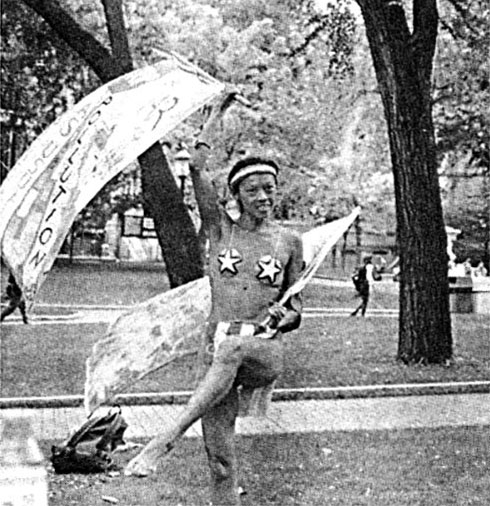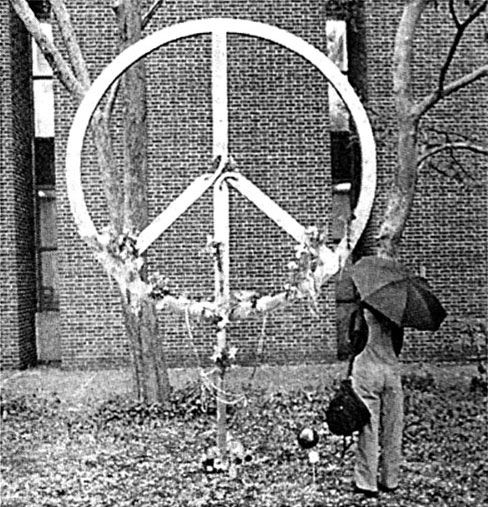Atmospherics
1990/2005 | city: works of fiction
Catalogue number for the world is HNCD 1483.
CITY: Works of Fiction was re-issued in July 2005 via All Saints / Hannibal (Ryko) with new cover art:
From the CD notes:
• Spirit: not only in the forest but in the carwash, too. Exotic culture forms highlight pop culture forms and vice-versa…
“…and the end of all our exploring will be to arrive where we started and know the place for the first time.”—T.S. Eliot
• Expanding sonic menu made possible by continuing inquiry into what’s the baby and what’s the bathwater, i.e., relationship of surface features (recognizable to most) to structural sophistication (recognizable by few).
“…to change our way of reading (listening), to be attuned simultaneously to flashing surfaces and structural intricacies … both televisual and poetic, and to alter consciousness toward a future mode of perception.”—Mark Edmundson
• Spontaneous combustion of rap, hip-hop as urban folkloric forms. “Folkloric” in the sense that it arises out of sentiments and materials at hand.
• Compare African tribal style: dance, poetic storytelling (in-jokes, ironic boasting mixed with traditional wisdom), local instruments. Hip-hop style: same, except that local instruments are not skin and wood but samplers and turntables and drum machines with TV tempos.
• Funny idea: that parts of CITY are like “classical” hip-hop …What rappers might tune into as an exotic extension of their vocabulary.
• Desire to reinvent, redefine possibilities of Fourth World …To poke air holes in the enclosing bubble of the inevitable banalization and orthodoxy of the “World Music” idea.
• Nigerian writer Ben Okri’s “Brave New Africa” images: City of Red Dust… bizarre ailments… conmen selling Power Drug… A continent dreamed up by Bosch and Borges.
• The polyglot L.A. of the near future in Ridley Scott’s Blade Runner.
• Jean Baudrillard: America as “the primitive society of the future.”
• Italo Calvino’s Invisible Cities: A poetic fantasy conjugation (past, present, future) of “city”. “And from the mixture of those two cities a third emerged, which might be called San Francisco … and which might blossom as capital of the Pacific a millennium hence, after the long siege of three hundred years that would lead the races of the yellow and the black and the red to fuse with the surviving descendants of the whites in an empire more vast than the Great Khan’s.”
• Fellini’s “Reggiolo”: a custom designed film town …It could be Bombay, Beirut, Brasilia.”
• Surrealists’ idea: “Odd things meet in full light.” (Or: ordinary things in odd light?) “Surrealist music”.
• Rushdie’s image of a tropicalized London: “… institution of a national siesta… vivid and expansive patterns of behaviour among the populace, higher-quality popular music, new birds in the trees… improved street life, outrageously colored flowers (magenta, vermilion, neon green), spider monkeys in the oaks… hotwater bottles banished forever, replaced in the foetid nights by the making of slow and odorous love… friends dropping in on one another without making appointments, closure of old folks’ homes, emphasis on the extended family…”
©1990 Jon Hassell
fictions
1. VOICEPRINT (BLIND FROM THE FACTS) Metal Fatigue is a euphemism. The same vibrations express sympathy or illness depending on their target. At night the broken glass looks like a field of stars. Seen from the towers, the tail lights of a car cruising for prostitutes can spell out short words, like L-U-V.
2. PAGAN In our search for a way of keeping track of minutes and seconds without tools we discovered music and from then on the other arts chimed in. Harvests improved. We developed new fruits and flowers and invented dessert wines.
3. MOMBASA They sell orchids in the ladies room. The subway is free. The train keeps rolling all night long. On it they sell fresh orange juice and newspapers. Rice is a dime and it’s white. When it rains everything shines like glass. Once in a while the wind blows through this town from the North and sandblasts everything. What’s metal shines, what’s painted, they repaint.
4. TIKAL At any given time exactly the same number of people will be found to be sleeping there. Sleeping past the alarm is a crime. Doctors make the patients run or weave specific patterns of lace. Smoking is mandatory in restaurants.
5. IN THE CITY OF RED DUST Their engravings of God depict him in a hammock. The grandeur of a home usually has to do with the size of its central fountain. Many of their priests are also hairdressers whose pricey creations represent mythological events. Although nudism is the custom, men and women rarely are seen unveiled.
6. RAIN The wind changes the beat. Water blows around the corner and down the block. It’s backed up. Foreign cars with horns in minor keys. Hear the phone wires bang and echo like a cheap cave. The wind is playing with fire.
7. BA-YA D I always wondered how they could dig a city like that up. Who buried it in the first place. Don’t tell me it just gathered dust for that long. Somebody must have buried it. Maybe they were trying to hide it so their apartments would be vacant when they came back and then they never did.
8. WARRIORS Bad mothers. Fierce but laid back. Wearing colors you’ve never seen. Gangbanging without moving. Napping in your face. Sleeping in a car outside your house with the radio on.
9. OUT OF ADEDARA Their architects were blind women. From these towers rose the hot air balloons of the singers. The baths stretched from the North wall of the city to the South. To enter the women’s city from the men’s city one had to pass through them, and the same going the other way.
Glenn O’Brien

